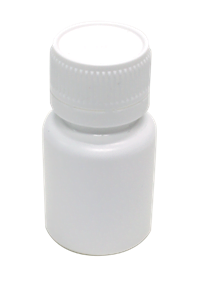Want to Live longer? Get your Vitamin D3 level checked.
The Role of Vitamin D in Your Body:
Vitamin D refers to either vitamin D2 or D3, but D3 (chemical name 25-hydroxy vitamin D) is real vitamin D—it’s the same substance produced naturally through your skin by sun exposure.
Older research appears at odds on whether your body cares which form of D it’s getting, but a study in the January 2011 Journal of Clinical Endocrinology & Metabolism found that D3 is 87 percent more effective than D2, and is the preferred form for treating vitamin D deficiency. Even more recent is add K2 to Vitamin D3 to enhance its effect in your body.
The Link Between Vitamin D Deficiency and Cancer Has Been Well-Tested and Confirmed. Theories linking Vitamin D to certain cancers have been tested and confirmed in more than 200 epidemiological studies, and understanding of its physiological basis stems from more than 2,500 laboratory studies, according to epidemiologist Cedric Garland, Dr PH, professor of family and preventive medicine at the UC San Diego School of Medicine. Look at our Vitamin D page on our website to view these studies. But in a nut shell people with long term low Vitamin D levels have a higher incident of many forms of cancer, heart disease and inflammation.
Many Australians Are Vitamin D Deficient:
In the Australia, the late winter average vitamin D is only about 30-40, which is considered a very serious deficiency state. Meanwhile, it’s thought that over 95 percent of Australians senior citizens may be deficient, along with 85 percent of the Australian public.
Further:
- Vitamin D deficiency is epidemic in adults of all ages who have increased skin pigmentation, such as those whose ancestors are from Africa, the Middle East, or India, who always wear sun protection, or who limit their outdoor activities.
- African Americans and other dark-skinned people and those living in northern latitudes make significantly less vitamin D than other groups.
- 60 percent of people with type 2 diabetes have vitamin D deficiency.
- Studies showed very low levels of vitamin D among children, the elderly, and women.
Is Sun Exposure the BEST Way to Optimize Your Vitamin D Levels?
Due to decades of professional and media misinformation, the typical person believes she should avoid the midday sun and need to use sunscreen before, and several times during, sun exposure. Unfortunately, this is a prescription for minimizing vitamin D levels and all its widely-appreciated benefits. To optimize your vitamin D level and get a healthy tan, it is important in the first few days to limit your exposure to the sun to allow your body’s melanocyte cells to rev up the ability to produce protective pigmentation. Not only will this give you a tan, but it also serves to help protect you against overexposure to the sun. If you are a fairly light skinned individual that tends to burn, you will want to limit your initial exposure to a few minutes, especially if it is in the middle of summer.
So the recommended dosages in a moment, the most important message is that you need to take whatever dosage required to obtain a therapeutic level of vitamin D in your blood. The recommendations for optimal vitamin D levels have steadily increased over the past several years. Optimal blood level is currently above 110 this is however currently under debate.
Fortunately, GrassrootsHealth has done the research and determined that the average dose of oral vitamin D that most adults need to reach 40 ng/ml is 8,000 IU’s a day or 40000IU weekly.
Getting the correct test is the first step in this process, as there are TWO vitamin D tests currently being offered: 1,25(OH)D, and 25(OH)D. The correct test your doctor needs to order is 25(OH)D, also called 25-hydroxyvitamin D, which is the better marker of overall D status. This is the marker that is most strongly associated with overall health.
The OPTIMAL value that you’re looking for is 110-180 and this range applies for everyone: children, adolescents, adults, and seniors.
Keeping your vitamin D level within the optimal range, and even erring toward higher Vit D numbers, is going to give you the most protective benefit. And the way you maintain your levels within this range is by getting tested regularly — say two to four times a year in the beginning, and adjusting your vitamin D intake accordingly.
Crucial Information About Vitamin D Testing That You NEED to Know
One of the most important things to keep in mind if you opt for oral supplementation is that you only want to supplement with natural vitamin D3 (cholecalciferol), which is human vitamin D.
Do NOT use the synthetic and highly inferior vitamin D2. Many well intentioned doctors who seek to take advantage of a patient’s prescription coverage typically prescribe this. Unfortunately this form is FAR more expensive than the real vitamin D3, which is one of the least expensive vitamins we have. But more importantly it does not work nearly as well as D3 and can actually block the real D3 from working properly.
Bottom line: ONLY use vitamin D3 when supplementing.
GrassrootsHealth has greatly contributed to the current knowledge on vitamin D through what’s called the D* Action Study. They published their first paper in 2011, which includes data on about 3,500 people. One interesting finding is that it’s not nearly as easy to reach toxic levels with oral vitamin D3 supplementation as previously thought. According to Carole Baggerly:
“… One very significant thing shown by this research was that even with taking the supplement, the curve for the increase in the vitamin D level is not linear. It is curvilinear and it flattens, which is why it’s even hard to get toxic with a supplement.” This is a good thing as you can’t overdose!
As mentioned earlier, based on this research, it now appears as though most adults need about 8,000 IU’s of vitamin D a day in order to get their serum levels above 40 ng/ml. Not only is this significantly higher than before but this also means that even if you do not regularly monitor your vitamin D levels, your risk of overdosing is going to be fairly slim, even if you take as much as 8,000 IU’s a day.
Your vitamin D supplement is best taken with fat soluble foods or supplements for optimal absorption once a day. It is compounded in a high dose capsule 5000-50000IU taken daily or weekly OR a suspension of flaxseed/ Fish Oil to take sublingually daily. Transdermal Vitamin D 3 cream is also a very novel and exciting new method if your skin is dry and inflamed or muscle pains are present.
Additionally, a robust and growing body of research clearly shows that vitamin D is absolutely critical for good health and disease prevention. Vitamin D affects your DNA through vitamin D receptors (VDRs), which bind to specific locations of the human genome. Scientists have identified nearly 3,000 genes that are influenced by vitamin D levels, and vitamin D receptors have been found throughout the human body. Get your levels checked today!!



Reviews
There are no reviews yet.